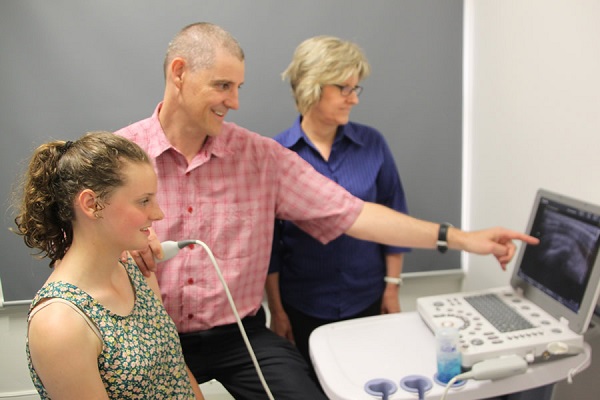The shoulder is stabilized by a group of muscles and their tendons. This group of muscles (supraspinatus, infraspinatus, teres minor, and subscapularis), and their tendons, is called the rotator cuff or rotor cuff. The rotator cuff is important in shoulder movement and in maintaining shoulder joint stability.
Muscles and tendons can be irritated or damaged, and as a result, a rotater cuff injury can appear. The shoulder injury may occur suddenly after a specific traumatic injury, such as an acute fall on an outstretched arm and hand. Alternatively, the tendon and muscle inflammation may be due to a chronic injury that gets progressively worse over time because of daily activities that aggravate the shoulder muscles. This chronic shoulder injury is called a repetitive or over use injury. In this type of injury, repeated activities cause damage to the tendons, and might require surgery.

A rotator cuff tear can also develop within the tendons over time due to the tendons wearing thin. This is called tendinitis, which is an inflammation of the muscles. Rotator cuff tendonitis usually happens to those over 40 years of age and who repeatedly do overhead activities. Calcium deposits can also cause rotator cuff tendinitis. Calcium may deposit in the tendons due to decreased oxygen and poor blood supply. Once torn, a rotator cuff has difficulty healing due to its very poor blood supply.
Therapeutic ultrasound modalities have proven to be an effective alternative in the healing of rotator cuff shoulder injuries, because the ultra sound waves increase blood circulation and oxygen to the site of the tear. Basically, ultrasound therapy stimulates tissue beneath the skin’s surface using sound waves. These waves penetrate the skin, increasing the blood supply. When blood supply increases, local swelling and chronic inflammation are reduced. In addition, these sound waves cause the soft tissue to vibrate. These vibrations help to heal, and also reduce inflammation and relieve pain. Rotator cuff ultrasound therapy has shown good results, with pain relief and increased range of motion.
For a rotator cuff disorder, a portable home ultrasound machine can be very beneficial in relieving the pain associated with this condition and speeding the healing process. While ultrasound therapy treatments were once reserved for only professional athletes, it is now possible to treat many painful conditions in the comfort of your own home with a pulsed ultrasound unit.
A soft tissue injury such as a torn rotator cuff requires a specific kind of home ultrasound machine. An ultrasound physical therapy machine for home use should utilize 1Mhz ultra sound waves. The ultrasound device should also have FDA approval and be quality manufactured. You will also want to examine the details of the warranty and ensure that the unit is covered with at least a 1 year warranty.
While a physical therapist’s ultrasound machine will use continuous wave ultrasound, pulsed ultrasound is just as effective at treating painful conditions, like a rotator cuff injury, but treatments will be more frequent. You now have the opportunity to treat your torn rotator cuff daily in the comfort of your own home with a portable therapeutic ultrasound machine.




